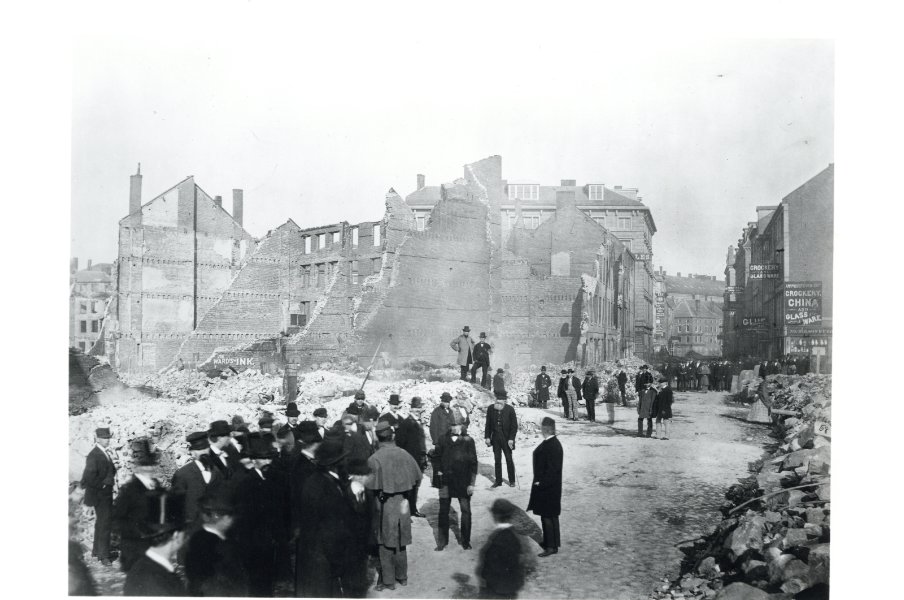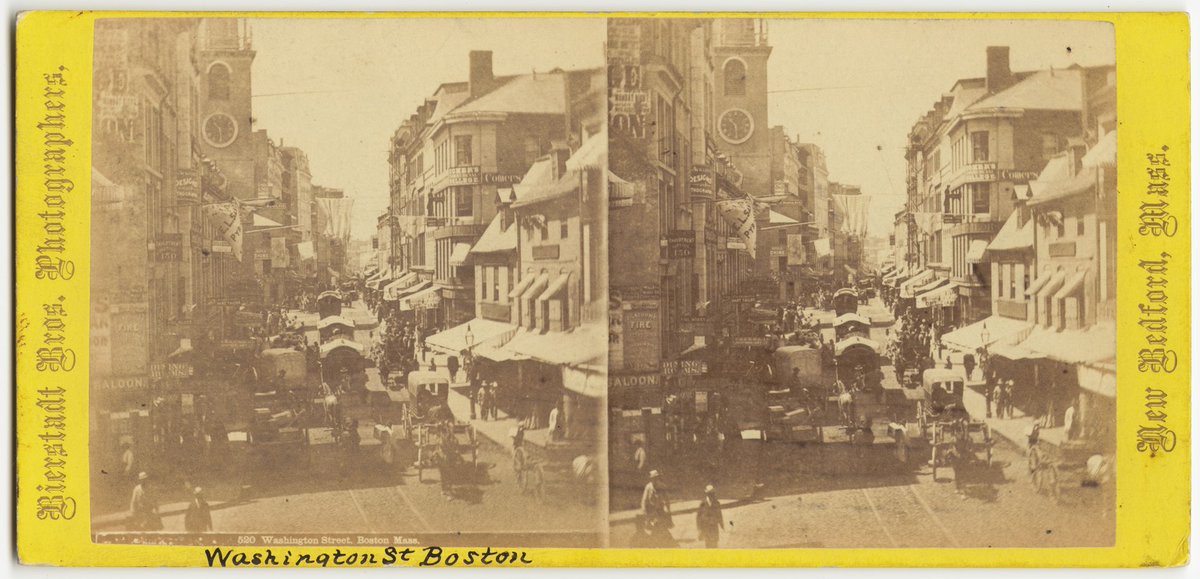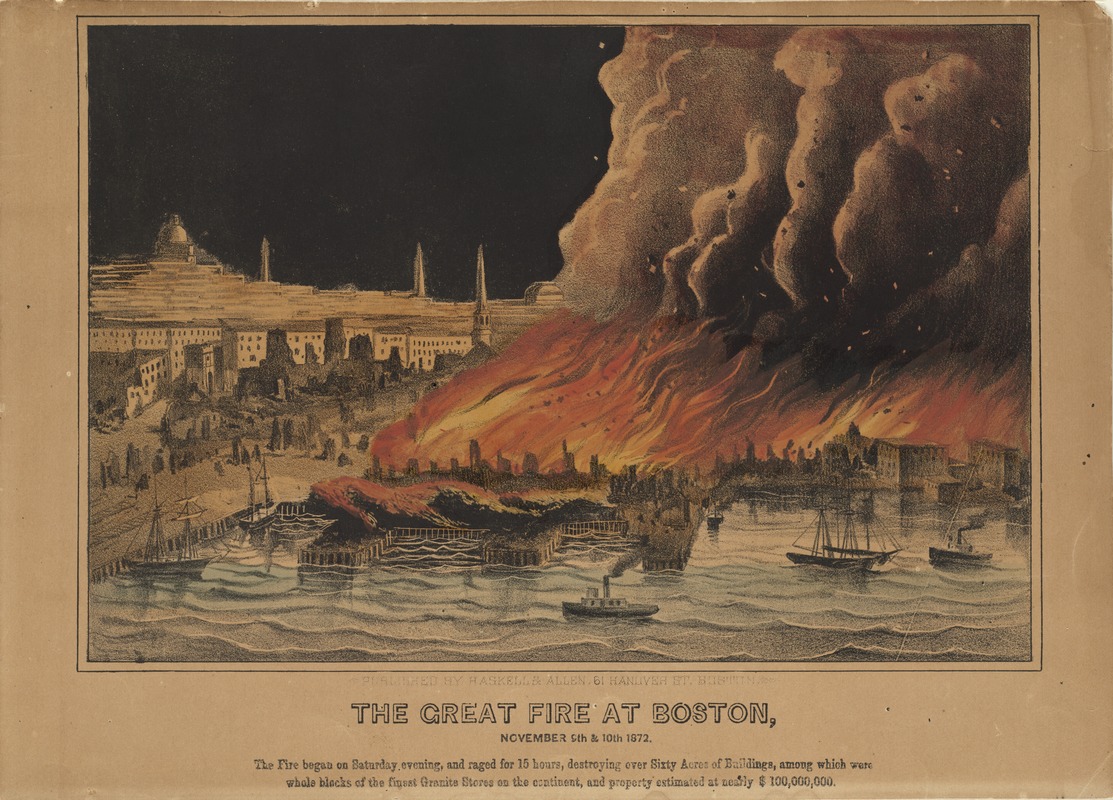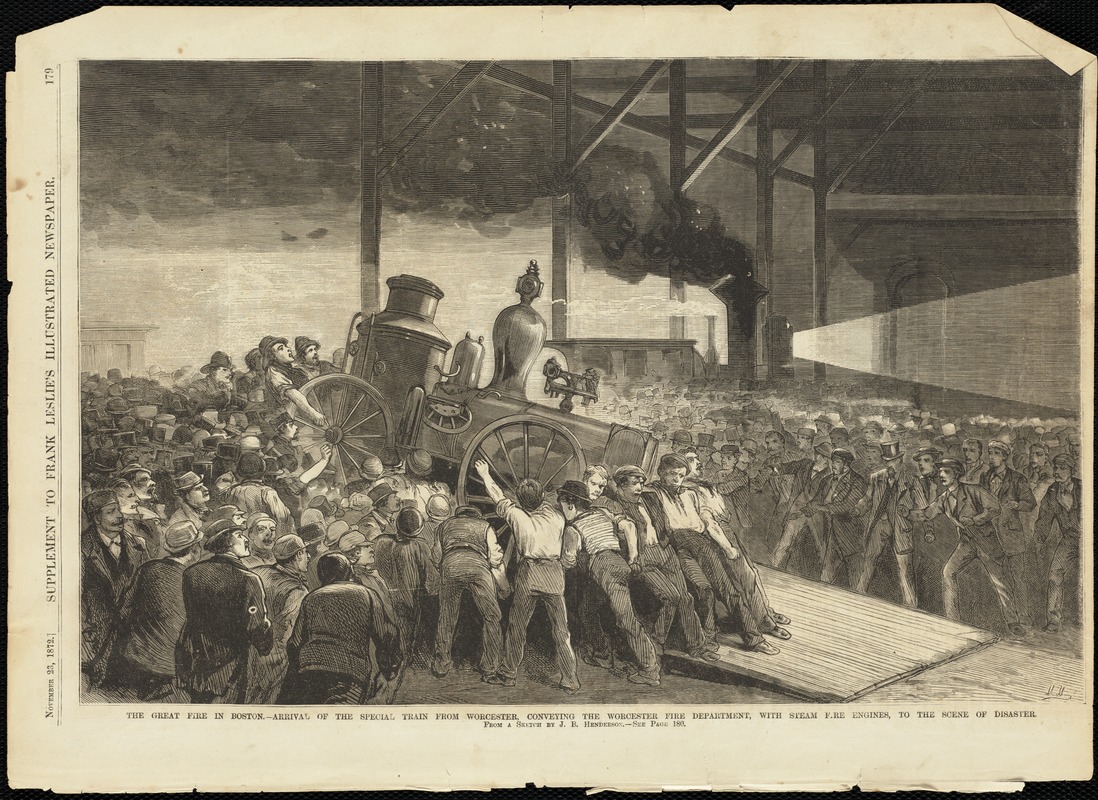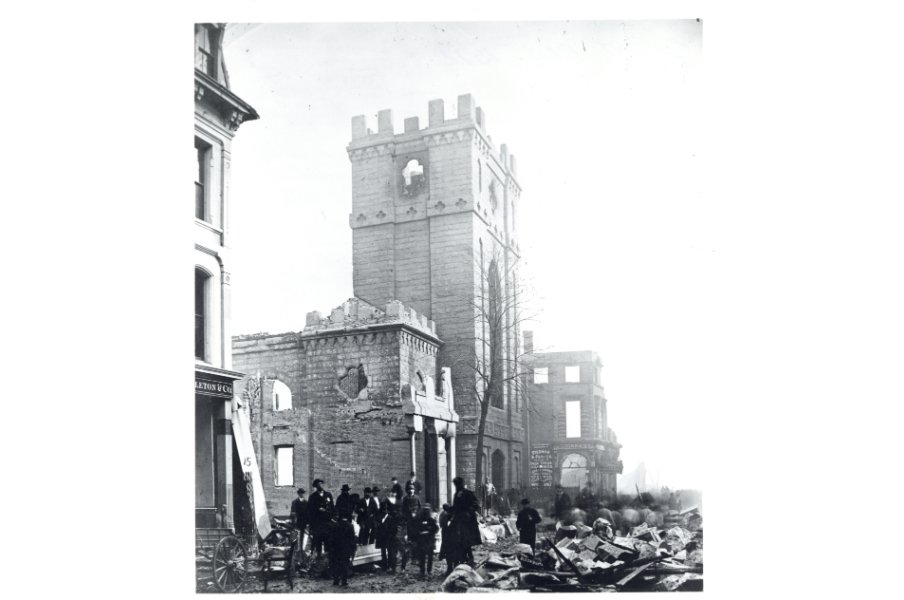On November 9, 1872, the Great Fire of Boston destroyed more than 1,000 businesses in Boston’s downtown area. Today, we're taking a closer look at Boston's most destructive fire. 

After the Civil War, Boston's downtown grew rapidly. Infrastructure improvements, however, had lagged behind the pace of new development. https://www.digitalcommonwealth.org/search/commonwealth:7p88d720j
In the fall of 1872, among other necessary improvements, Boston's downtown badly needed upgraded water mains. The fall of 1872 also brought an epidemic of epizootic to Boston's horses. This disease affected the horses who worked pulling Boston's fire apparatus.
Under these conditions, a fire started at 83-85 Summer St on Nov 9. At 7:24 pm, the 1st alarm was sounded from Fire Box 52 at the corner of Summer and Lincoln Streets. When firefighters arrived, they found the building almost entirely engulfed in flames. https://www.digitalcommonwealth.org/search/commonwealth:xp68kr53j
The fire spread rapidly, producing incredible heat. Though many buildings in the fire's path were stone or brick, most had wooden signs, windows, or other wooden features, which caught fire. The flames were so hot that some structures actually melted. https://cityofboston.access.preservica.com/uncategorized/IO_b1acf3d1-8242-481a-bd91-fe4989bf77a1/
Almost all of Boston's neighboring cities and towns sent assistance. Help came from as far away as New Haven, CT which sent a steam engine to Boston by railway! This image shows a similar engine arriving from Worcester. https://www.digitalcommonwealth.org/search/commonwealth:xp68kr439
The fire blazed for more than 15 hours. Finally, firefighters subdued the flames by blowing up buildings to limit the the fire’s fuel supply. Despite the scale of the fire, only two Boston firefighters lost their lives. Estimates of civilian deaths are between 11 and 18.
The fire devastated Boston's downtown. This image was taken by @cityofboston to document the damage.
One of the destroyed buildings was Boston's Trinity Church. This photo shows its ruins. https://cityofboston.access.preservica.com/uncategorized/IO_2fdc9118-1b40-452d-9aa0-14661575f4e5/
In the wake of the fire, blame for the blaze fell on Boston’s Fire Chief John Damrell. Damrell had actually warned City officials that Boston was at risk of a catastrophic fire and had attempted to take preventative measures.
After a visit to Chicago after Chicago’s Great Fire of 1871, Damrell had asked Boston’s officials to improve the city's water mains and take other steps to prevent a similar fire in Boston. His arguments for improved fire fighting tools fell on deaf ears.
Though he had warned the City that a serious fire was imminent, Damrell was widely blamed for the fire. He lost his job as the City’s chief fire engineer in 1874 when he was replaced by the Board of Fire Commissioners.
Damrell continued to work to prevent catastrophic fires, and spent the rest of his life working to implement a national building code. He also served for many years as the commissioner of the Boston Building Department.
Want to learn more about The Great Fire of 1872? Take a look at our blog post! https://www.boston.gov/news/notes-archives-great-fire-1872

 Read on Twitter
Read on Twitter